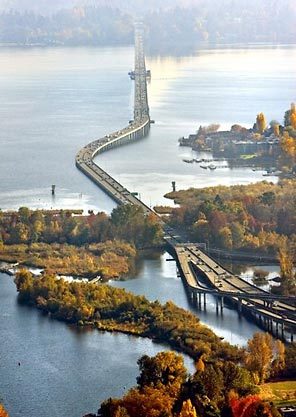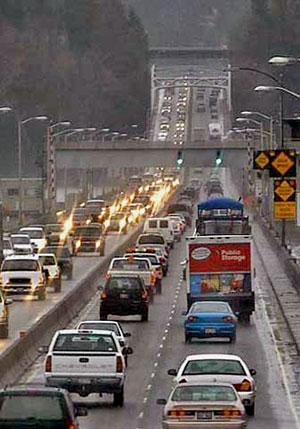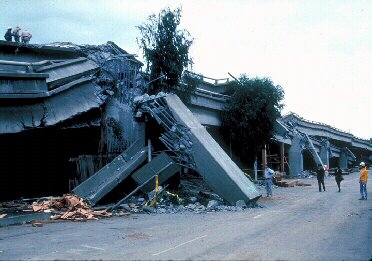Building a Rail Transit System: The Private Sector Role
published 1997
In November 1996, Puget Sound voters chose to raise their taxes to allocate nearly $4 billion over the next decade to implement two new rail systems to connect points in Pierce, King and Snohomish counties. These systems will cost billions of dollars to build, and could include a massive tunnel underneath Capitol Hill and the Lake Washington Ship Canal as part of a new light rail system. So far, all the financial risks for these new systems will be entirely borne, as usual, by the taxpayers. Does this have to be the case?
Vancouver, BC based infrastructure consultant Jonathan Huggett says no. Huggett, who has over 25 years of experience building public works projects including Vancouver's SkyTrain, says that by using an open and competitive implementation process the Regional Transit Authority could significantly lower their costs. He thinks they have four options before them, all of which deal with their relationship with the private sector and its ability to infuse competitive pressures into public processes.
Options for Rail Transit Construction
The Traditional Government Method: In the traditional method, a public agency designs a facility, contracts with the private sector for its construction, and then operates it. The taxpayers assume all the risk of cost overruns and of inefficient operation. Where the public facility also has the "upside" or profit potential, experience shows that the lack of competitive incentives and disciplines make realization of any upside unlikely at best. Huggett says this method is "the worst risk, highest cost, and biggest recipe for a disaster."
Design/Build or Design/Build/Operate: Using the increasingly popular Design/Build model, the public agency establishes end-result criteria such as service quality and expansion details, technology issues, and performance standards. Teams of private sector land developers, engineers, and contractors then engage in a competition to design a project, bidding on the whole thing. Traditionally, the design phase of any public works project is the most expensive, and consequently where most savings can occur if competitive pressures are brought to bear by those firms designing the project.
A variant with even more cost-savings potential is Design/Build/Operate, whereby the winning team in a Design/Build competition also receives a franchise to operate the facility. Many public projects are often "goldplated", meaning simply that they are overdesigned because capital budgets are separate from maintenance budgets. Private operators integrate these budgets, creating an incentive to design a project with the optimum cost for its entire life.
Add Private Finance: Mobilization of private financial resources to augment or even replace public funding requires innovation, risk-sharing, and most importantly trust, but can relieve taxpayers from higher project costs and permits more rapid construction. Adding private finance should only be done with a private sector partner prepared to assume its share of risk. The new interchange on Interstate 5 near DuPont (built in record time and under budget) was paid for by a private landowner willing to assume the risk of underwriting the entire project cost in exchange for the gains they receive from the interchange's rapid construction.
In designing rail systems private finance could come into play in the siting and construction of stations. During the final phase of building the SkyTrain system in Vancouver, land owners recognized the substantial value of siting stations adjacent to their property. After receiving general instructions from the public agency about routes and locations, three private sector land developers came forth at their own cost with proposals to finance, design, build and operate three stations. The result? Costs were voluntarily shifted directly from taxpayers to the private developers who benefitted from the increase in their property's value.
Total Service by the Private Sector: The construction of America's rail network in the 19th Century relied on public support through condemnation power and financial assistance through land grants, but the responsibility and risks of construction and operation fell upon the entrepreneurs who built the railroads. It is unrealistic to expect the Regional Transit Authority to franchise its entire system to the private sector. Legal and regulatory obstacles stand in the way of any such idea.
But, opportunities exist short of this. The RTA could choose a location for a rail station and offer private land developers the opportunity to finance, design, build and operate the facility, with associated revenue-producing activities like parking garages and retail stores oriented to commuter's needs. Public goals are met by the construction of a first-class rail station, while private interests bear the cost, risks, and benefits of building and operating the facility.
What criteria could the RTA use in choosing the best option for building the public's new rail systems? These four general factors might be helpful: first, determine the best package of system provisions. Second, determine the best financial package for the specific project - how to best capture value for money. Third, determine whether the traditional model can squeeze the most efficiency out of operating and maintaining the new systems or if some other model could perform better. Finally, determine an appropriate and cost-effective procurement process.
Conclusion
What this all comes down to is properly allocating risks. In a project the size and scope of the Regional Transit Authority, the question remains whether it is appropriate for taxpayers to bear the entire burden of building a system which will benefit some and hurt others. As Jonathan Huggett advises, "the facts are...the only way that public sector manages risk is usually dipping deeper in the taxpayer's pocket." When risk is not managed wisely in the private sector shareholders lose their money and managers lose their jobs.
The phrase,'Unsound Transit', was coined by the Wall Street Journal to describe Seattle where,"Light Rail Madness eats billions that could otherwise be devoted to truly efficient transportation technologies." The Puget Sound's traffic congestion is a growing cancer on the region's prosperity. This website, captures news and expert opinion about ways to address the crisis. This is not a blog, but a knowledge base, which collects the best articles and presents them in a searchable format. My goal is to arm residents with knowledge so they can champion fact-based, rather than emotional, solutions.
Transportation
Wednesday, March 12, 2008
Private Sector Role in Building Light Rail
The articles are posted solely for educational purposes to raise awareness of transportation issues. I claim no authorship, nor do I profit from this website. Where known, all original authors and/or source publisher have been noted in the post. As this is a knowledge base, rather than a blog, I have reproduced the articles in full to allow for complete reader understanding and allow for comprehensive text searching...see custom google search engine at the top of the page. If you have concerns about the inclusion of a specific article, please email bbdc1@live.com. for a speedy resolution.









